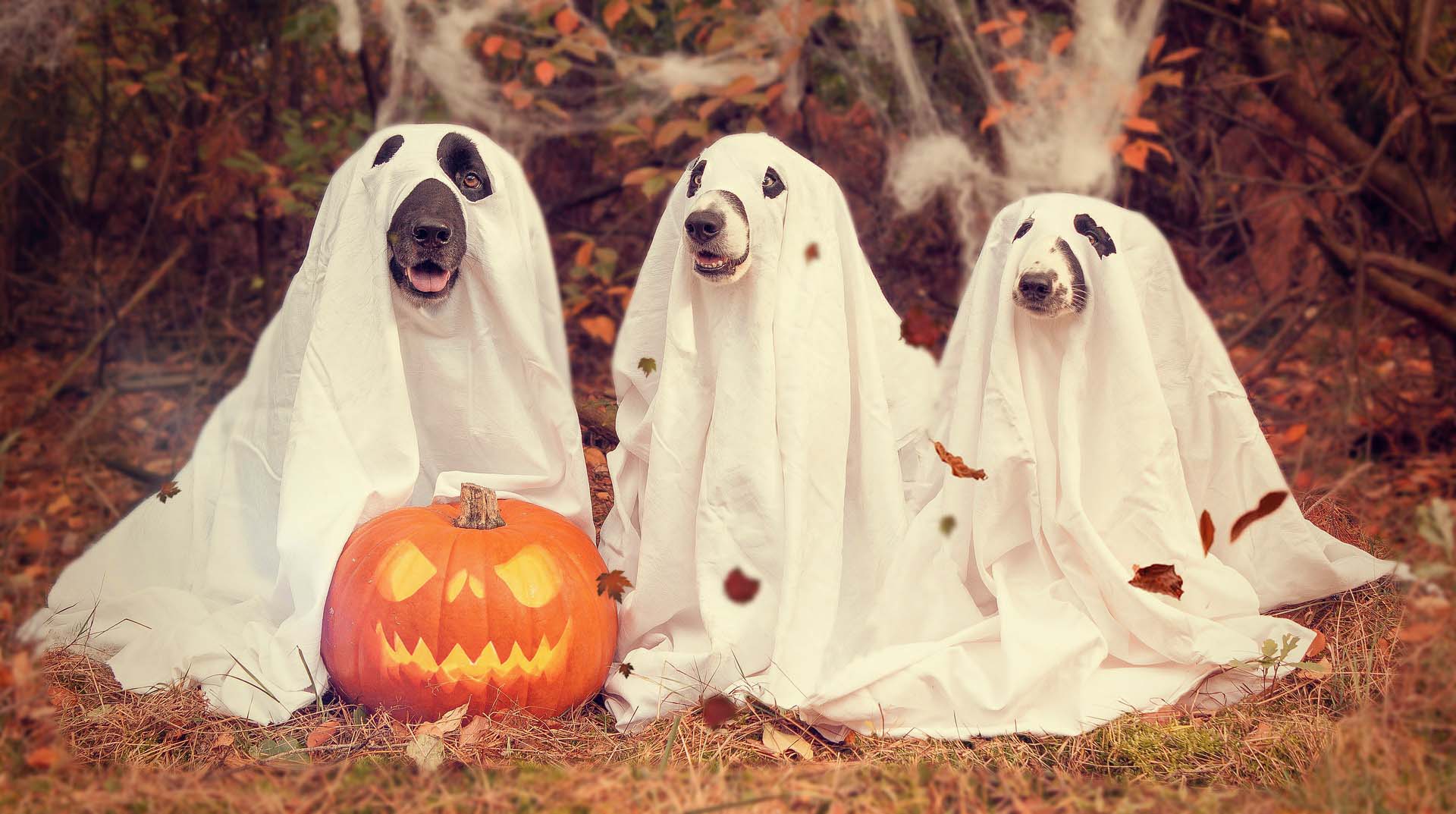
the scientific study of pet nutrition by veterinary nutrition specialists and experts.
The Dangers Lurking in Your Halloween Candy

We all know that candy isn’t good for us – added sugar has become public enemy #1 from a health perspective in recent years. Even knowing this, however, there are few of us who can resist sneaking a piece of two from our kids’ loot or the supply that we’ve bought to give out to neighborhood kids. Our pets often have similar thoughts, but for them candy can present dangers well above concerns with cavities or too much sugar.
Here are the most dangerous treats in your bowl, pillowcase, or pumpkin this holiday:
- Chocolate – Understandably, dogs (and occasionally cats) love chocolate! How dangerous chocolate is depends on the type, size of pet, and how much is eaten. A large dog can eat a few of the typical “Fun Size” candy bars that contain milk chocolate along with nuts, nougat, caramel, etc. and may be fine other than some minor GI upset. However, even small amounts of dark chocolate can be dangerous, particularly for a small pet. Besides the high fat level, chocolate also contains compounds called methylxanthines that can cause gastrointestinal upset, hyperactivity, tremors, rapid breathing and dangerously increased heart rates in animals. You can use this calculator to estimate how likely it is that a toxic dose has been eaten. Keep all chocolate away from your pets and if they do accidentally eat an amount that could be toxic, contact your veterinarian right away.
- Raisins – Some people may give out plain raisins, chocolate covered raisins (double whammy!), or trail mix instead of candy. Unlike chocolate where we can estimate the danger based on the amount eaten, researchers still don’t have a good idea of how many raisins are needed to be toxic in dogs. While some dogs seem to suffer no ill effects, others can get deathly ill after eating only a couple. Raisin (and grape) toxicity can cause life-threatening kidney failure in dogs – you should immediately take your dog to a veterinary hospital if you know or suspect that they have eaten raisins or grapes.
- Xylitol – This popular low-calorie sweetener is widely found in sugar-free gum and other sugar-free candies and baked goods (as well as drink mixes, human dental products, and a variety of other foods and household products). Consumption of foods that contain xylitol can cause dangerous drops in blood sugar in dogs and in the most serious cases can cause liver failure. All pets that consume xylitol should be hospitalized for monitoring and supportive care.
Keep in mind that even if your pet doesn’t eat any candy with toxic ingredients, they may still be at risk from the wrappers, sticks, etc. getting stuck or causing irritation in their gastrointestinal tract.
For more information on toxic foods for pets or if you think your pet may have been exposed, contact the ASPCA Animal Poison Control Center .
Want to read more information on feeding your pet?
Subscribe to always know when we add new material!
Recommended Posts

Can Diet Help With My Dog’s Seizures?
January 18, 2024

The Most Popular Holiday Foods…That Your Pet Should Avoid!
December 08, 2023

Veterinarian Recommended Pet Foods: What You Need to Know
November 05, 2023

